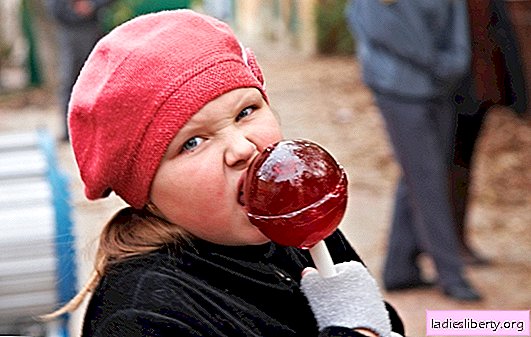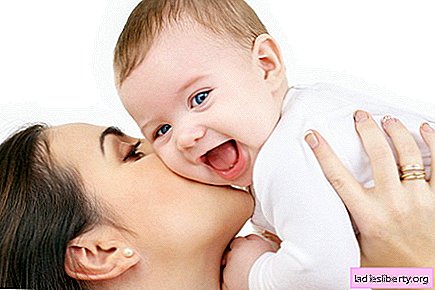
According to statistics, 70% of mothers experience colic in their child. The incompletely developed digestive system and ingestion of a large amount of air during feeding leads to bloating. The child is naughty, crying, refuses to eat. How to be a mother, if a newborn has colic, what to do and how to help him?
Colic in a newborn what to do: causes
Why do babies have colic in the tummy? Specialists still cannot give one specific answer to the question. But nevertheless, doctors identify the main reasons why newborns suffer from colic.
The digestive tract of the baby is not fully developed
In the first three weeks after birth, the baby’s body is completely protected by the maternal hormones that it received while in the womb, and some of them still come with milk. Thanks to hormones, the baby can adapt to a new lifestyle, including the fact that now food comes in a slightly different way. Previously, the gastrointestinal tract only trained to take food, but now it has to process real food. Upon receipt of the first meal, the first beneficial bacteria also enter the digestive tract.
The child's enzymatic system is immature; it cannot produce the necessary enzymes for processing food in the right amount.
In addition to all this, with the growth of the baby, his need for food also increases, each time he eats more and more milk, and of course the gastrointestinal tract can not cope with this.
The sensitivity of the child is increased
Many mothers do not even suspect that their baby's colic occurs due to the baby’s increased sensitivity to various psychological and physical factors. There can be severe pain in the tummy due to everything: hot weather, an uncomfortable diaper, fear, hunger, lack of mood and so on. There is one version according to which the child experiences a kind of stress after being removed from the womb, which is why he needs a constant feeling of his mother nearby. It is very important that the mother, being next to the child, be calm.
Incorrect breastfeeding
When feeding, the baby can capture and swallow a lot of air, which subsequently leads to increased gas formation and bloating. That is why from the first day of feeding, you need to learn how to properly apply your baby to the chest.
Experts say that you need to feed on demand, and not on time. Take a comfortable position. Usually in the maternity hospital, young mothers are shown how to apply and feed the baby.
Nursing mother violated diet
A woman who is breastfeeding should be extremely careful about her diet. The most common reason why a child has colic is because her mother does not eat well. Increased gas formation can occur with excessive use of flour and sweet, fruits and vegetables. If the baby is on artificial feeding, then the pediatrician must choose the right mixture. It must be prepared strictly according to the instructions, in no case preventing overfeeding and not leaving the child hungry.
In rare cases, the child cannot tolerate lactose in breast milk, this can be checked easily by passing certain tests.
Other causes of colic
Unfortunately, in some children, colic occurs due to the organic nature, namely, it is only a consequence of disorders or pathologies. We must not forget about hereditary factors.
It is worth noting that in children with artificial feeding, colic occurs much more often and is more difficult for the child to tolerate than in babies who are naturally fed.
There is a popular belief that boys have colic more often than girls, but this fact is not scientifically confirmed.
Many young children react even to the weather, and if they do not like it, crying and colic can not be avoided.
Colic in a newborn what to do: symptoms
In order to distinguish colic in a newborn from an incipient disease, you need to know the symptoms that you need to pay attention to during an attack. Usually, colic in newborns is manifested as follows:
1. Colic starts suddenly, and most often it occurs either after feeding, or at night.
2. The kid begins to frown, cry, the child with all his appearance shows that something is bothering him.
3. After the occurrence of colic, the child strongly knocks the legs, sometimes presses them to the tummy or vice versa straightens. In this case, you can notice that the crumbs are pushing.
4. The face of the baby at the time of colic becomes very red, his hands are clenched into fists.
5. The baby cries strongly and loudly.
6. If you touch the tummy, it will be hard, maybe you can hear how everything inside rumbles.
7. Immediately after the tummy is released, with the help of regurgitation or the release of gaziki, the child will calm down, but then the colic will resume with renewed vigor.
8. After improper feeding, colic increases.
9. At other times of the day, the baby is awake, plays, laughs.
If suddenly you observe that the baby is vomiting, the color of the stool changes, the body temperature exceeds 37.5, be sure to call the local pediatrician.
Colic tortures absolutely all newborns, and many divide them into three principles:
1. It begins three weeks after birth.
2. On the first day of occurrence of colic, they last three hours.
3. By the end of the third month of life, colic ceases to bother.
If after three months colic continues to torment, it is necessary to conduct an examination, as this may indicate an upset stomach.
The main thing that parents should pay attention to is a temporary phenomenon. Be patient and remember that it will all be over soon.
Colic in a newborn what to do: treatment
Any mother wants to help her baby with colic. But what to do in order to reduce the frequency of their occurrence? The following are the main interventions for treating colic. Every mother should know that it is during this period that she should be extremely calm.
So, what treatment is necessary for the baby if he has colic?
Proper feeding
1. Allow the baby to suck your breast as much as he wants, even if it lasts an hour or more. At a young age, this is necessary.
2. Give the breast correctly so that as little air as possible enters the mouth.
3. Never feed a baby with a mixture. Lactation can always be normalized, this will help frequent attachment to the chest.
4. When the mixture is introduced, the condition will only worsen, since there are no enzymes in the body that will allow the protein to be digested.
Immediately after the feeding is completed, hold the baby upright for up to 10 minutes.
Dry heat
Under the influence of heat, cramps are relieved, blood circulation improves, muscles relax. Use a warm diaper. You can heat it by hanging it on the battery, or simply iron it with a hot iron. Gently attach to your tummy (make sure it is warm, not hot).
Gymnastics and laying out the baby on the tummy
Try to stroke your tummy more often. But do not do it once after the child has eaten, as the probability of spitting up in this case is high.
Massage
In infants, massage has a very effective effect. Spend it every time before you are going to feed the child. And it should be just a massage, and not just a light stroking. While pressing on the stomach, make circular movements in a clockwise direction. After that, bend the baby's legs and gently press them to the tummy.
Diet
Everything you eat gets into your bloodstream, and then into breast milk. If you are breastfeeding, then the first few months after his birth, many foods will have to be excluded from your diet. You can note a list of products that cause colic:
1. Yeast dough.
2. Fruits such as bananas, grapes and apples.
3. Dairy products.
Also, temporarily limit your intake of sweets. Unfortunately, many mothers, especially young ones, believe that milk production is enhanced by milk itself. However, it does not affect your lactation in any way and, moreover, it does not have a very good effect on the baby.
Medicines
You can’t give medicine to a small child on your own, visit a pediatrician first and consult with him. So, what medications can a doctor prescribe:
1. Espumisan.
2. Bobtik.
3. Acipol.
4. Linex.
5. Plantext.
If you follow the simple rules for feeding, you can protect your baby from colic.
What exactly bothers the child, colic or not, is unknown, therefore, even with all the symptoms indicating colic, you need to show the baby to the doctor. Go through a routine examination, get tested and be sure that everything is fine with your child!











